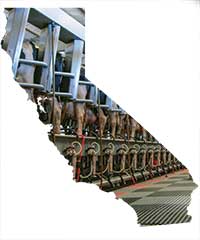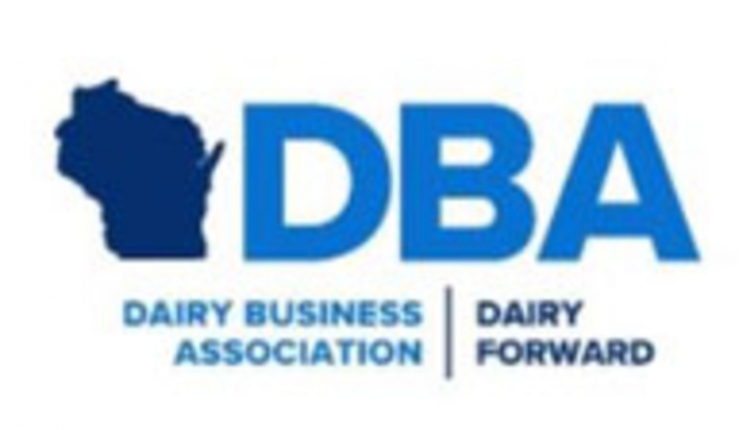 The ship that set sail this May with three statewide outreach meetings, and could one day result in California transitioning from a state to a Federal Milk Marketing Order (FMMO), could take two years to return to port. At the conclusion of that voyage, USDA could be rendering a final decision on a California order that would then be subject to a producer vote. Approval of the entire FMMO package would have to pass by a two-thirds majority. More on that later.
The ship that set sail this May with three statewide outreach meetings, and could one day result in California transitioning from a state to a Federal Milk Marketing Order (FMMO), could take two years to return to port. At the conclusion of that voyage, USDA could be rendering a final decision on a California order that would then be subject to a producer vote. Approval of the entire FMMO package would have to pass by a two-thirds majority. More on that later. At the onset of this process, everyone involved should know that there is no guarantee that USDA will ultimately bring forth a federal order proposal for a vote by dairy producers. "The decision to officially begin will be based on a number of factors," explained Dana Coale, deputy administrator of Agricultural Marketing Service's Dairy Program. "What parties are interested in moving the order forward will be one consideration," said Coale. "What are the existing market conditions in the state, and what are the implications to consumers, along with many other factors will also be considered.
"When we weigh all these considerations, a decision will be made as to whether or not to begin the rulemaking process. Once rulemaking begins, all decisions must be based on facts and evidence submitted during the process," said Coale. "And, ultimately, we have to render a decision that will withstand a legal challenge."
A ten-step process
If a federal order is to come to fruition in California, there is a defined ten-step process that USDA will follow to reach that final outcome. Since it has been over a generation since North and South Carolina investigated an FMMO, we will detail the steps federal officials will follow in California.
Step 1. This step was completed when three cooperatives - Dairy Farmers of America, Land O'Lakes, and California Dairies Inc. - submitted an FMMO proposal to USDA on February 5. That in turn started the clock for alternative proposals, which were due on April 10. USDA received three additional proposals from the Dairy Institute of California, representing dairy processors; the California Producer Handlers Association, a group of four producer handlers; and Ponderosa Dairy, a Nevada dairy farmer who sells milk into California. Like the co-op proposal, the Dairy Institute of California submitted a complete federal order draft, while the other two proposals were not complete drafts and simply discussed provisions related to their businesses found in the original proposal.
Step 2. Outreach meetings took place when USDA invited the public to a forum. Those May 5, 6 and 7 meetings were held throughout the Golden State and gave proposal sponsors time to explain the technical details of their submissions.
"After those meetings, USDA gave all parties time to revise their proposals. The deadline was May 22," said Coale.
Step 3. Once we have final proposals, we will analyze and run them through our economic model to ultimately decide whether USDA should move to the next step - a formal FMMO hearing."
Step 4. If the Secretary of Agriculture deems the proposals worthy of moving forward, a hearing notice will be published in the Federal Register. "This could take place sometime in July," said Coale. "It is at this point that USDA officials can no longer talk about the merits of the proposal. Our staff can simply comment on the hearing process as our role is to gather testimony and collect data."
Step 5. "A formal public hearing in California would be a next step of the process," said Coale. "That could take place in mid- to late-September. It would likely take place in the Highway 99 corridor in California's Central Valley.
"During the hearing, any interested parties may present testimony and evidence," explained the USDA official. "There will be an administrative law judge presiding over the process. A stenographer will document everything, and the complete hearing transcripts and exhibits will be posted for the public to read.
"The hearing itself could take in the neighborhood of eight weeks," said Coale. "We know a number of economists and lawyers will be making presentations. In order for dairy producers to give input in a predictable manner, we will likely designate a day each week so farmers can give testimony and not have to sit through the entire testimony process waiting for his or her chance to speak."
Step 6. The hearing is closed. "At this point, all parties may submit posthearing briefs," said Coale. "Once submitted, USDA will have all the details needed to make a recommendation."
Step 7. Six to nine months after the hearing closes, USDA will publish a "recommended decision" on a California FMMO. This decision will be based on the proposals submitted, summary of hearing evidence, analysis of issues and evidence. A recommended decision could be delivered in the fall of 2016.
"Once we publish a recommendation in a formal document, the industry and public can react and comment on USDA's findings," said Coale. "That comment period will last for 60 days."
Step 8. After reviewing the comments on the recommended decision for roughly three more months, USDA will issue a final decision. "Once a final decision is made by USDA on a potential order, there are no more changes," said Coale. "If the process proceeds to this point, a final decision could be issued in the spring of 2017."
Step 9. Voting takes place. "This is key to the process. There are two ways dairy producers can vote, by bloc voting or voting individually," noted Coale.
How does bloc voting work?
"If a co-op has been qualified by USDA, it can bloc vote on behalf of its producer members," said Coale. "Dairy Farmers of America and Land O'Lakes already are qualified for bloc voting. Since California Dairies Inc., (CDI) is solely based in California, it has not been qualified at this point because its members have never voted on an FMMO. However, CDI could take steps to do so. If a co-op chooses to bloc vote, it does so on behalf of all of its members."
Dairy producers whose co-ops choose not to bloc vote would be able to vote individually.
Also, independent producers could cast their own ballots, and producers in other states whose milk would become regulated by the order would also have the opportunity to vote.
Step 10. Ballots would be counted and two-thirds approval is needed to enact an FMMO. The two-thirds benchmark can be achieved two ways.
"If two-thirds of the producers who cast ballots either as individuals or through the co-op bloc voting process favor the proposal, it becomes effective," says Coale. "If two-thirds of producers do not vote in favor, there is one other standard. We would determine if dairy farmers producing two-thirds of the milk voted in favor of the final decision. If that occurs, the order would also be enacted," said Coale. "We would only look at the volume benchmark if a two-thirds head count of voting dairy producers is not met."
A transition would occur
Ultimately, if USDA were to put forth a final decision on a federal order in California and it was passed by dairy producers, there would be an orderly transition from the state milk order to a federal order.
As for the entire process, the potential path to a final decision is clear, structured and transparent for all involved. However, this time around, the possible order may attract more attention because California is the nation's largest dairy state.
"We know everyone is watching," said Coale. "We are fielding calls from across the country and with good reason, as California makes 20 percent of the U.S. milk."










